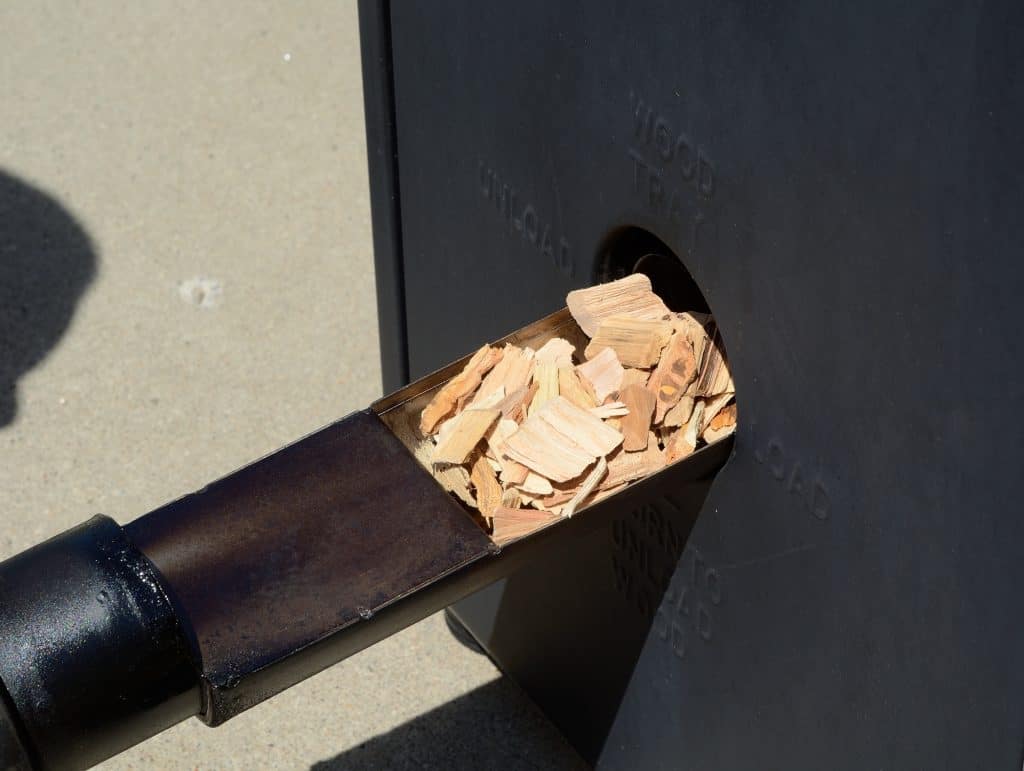Traditionally, wood was the only fuel that was used in the process of smoking meat. Although modern times have allowed us an easier and more refined way of smoking our favourite meats, the iconic smokiness of barbecue that we all love still starts from the humble piece of wood. Seasoning wood is the processing of drying and ageing the wood in the right conditions over time. Let’s break down the process and review how to season wood for smoking.
What Is Seasoning Wood?
Even if you’re eager to start smoking, you can’t just grab any wood and bob’s your uncle. No. Smoking woods are commonly dried hardwood that have been through a process to dry the moisture out and age the actual wood from anywhere between 6 months to 2 years. This process is referred to as seasoning.
Seasoning wood can be broken into three parts, drying, ageing, and preparation. You can air-dry and age the wood or you can kin-dry and age the wood. Once the wood has had most of its moisture drawn out of it, it becomes much easier to light, and it burns more consistently for a complete combustion.
After the drying process, it can then be broken down into various sizes for smoking. It can be prepared as logs or chunks for open fire smoking, wood chips, or into sawdust for the creation of wood pellets for smoking.
How To Season Wood For Smoking
The first step is to get your hands on some hardwood. This process doesn’t work for softwoods, or conifers, such as pine, redwood, or cypress due to the sap and other materials in them. If you have hardwoods such as hickory, oak, mesquite, maple, or some fruitier or nuttier woods such as apple, peach, or pecan, you’re good to go.
Air-Drying
Air-drying is the set and forget approach to seasoning wood. As the name suggests, air-drying relies on natural heat and air to draw moisture from the wood. When air-drying, and also while in storage afterwards, it’s important that the wood doesn’t touch the floor, as it may get damp or go mouldy.
The best way to season wood by air-drying is to store your wood in a log rack with a durable cover. It actually works best if you have somewhere outside to store it, but not in the open where it could be exposed to extreme weather. A little bit of rain is fine, as the drying process takes upwards of 6 months to 18 months this way, but excess rain will make it take much longer – which is why a durable waterproof cover is essential.
Kiln-Drying
Kiln-drying is the most effective and efficient way to season and dry hardwoods. This is the process of adding wood to a kiln, a type of furnace for drying, baking, or firing pottery. This way the whole process is controlled, and depending on the age, type, and moisture within the wood the process can take between 1-28 days.
How Do You Know Wood Is Seasoned?
If you’re air-drying your own wood it can be hard to tell definitively when the wood seasoning process is complete. However, there are some signs you can use as a guide to see if your wood has been dried and seasoned effectively.
- The weight of the wood. Moisture can weigh up to 25% of the total wood weight, so it can be quite easy to judge how dry the wood is by handling it.
- Visually, the outside and inside of the wood will be a lighter and have a whiter tone to it.
- If you take an axe to a piece of wood as it splits and splinters easily it’s a good sign the moisture has dried effectively.
- The exterior of the wood usually starts developing small cracks where the moisture has almost completely left the wood.
Although there isn’t a dead set way to tell if the wood is seasoned without using a wood moisture measuring tool, with experience you will pick it up reasonably quickly.
Preparing The Wood For Smoking
Once you’re satisfied with the drying process it’s time to break the wood down into chunk-able sizes for smoking. As a general rule of thumb it’s a good idea to remove the bark from the wood, as it can make the smoke less pure. The exception is when you’re preparing fruit woods, such as apple, peach, or cherry, as the bark can actually enhance the sweet or fruity flavors of the smoke.
Wood Size
The first thing to do is measure your smoke box, and understand what size wood will work best for your unit.
Logs: If you’re using logs for a campfire or smoke pit session, then you can be a bit more lenient with the size, and you may wish to just split them in half or keep them as is.
Chunks: Chunks are a lot smaller than logs but larger than wood chips. They shouldn’t vary in size more than about 20% to ensure they burn evenly and the temperature and smoke can be controlled easily. Usually chunks will be roughly the size of your fist, but can be longer depending on the size of your smoke box.
Although they don’t burn as long, they can still go for several hours in a smoker and are relatively easy to light up. Chunks are also better for longer smokes, as you don’t need to top them up as much as chips, so are a great size wood for smoking pork butt or the best woods for smoking brisket.
Wood Chips: Wood chips are much smaller than chunks, around the length of your finger and shouldn’t vary in size much. They are more popularly used in charcoal, electric, or gas smokers not as fuel, but to produce smoke and that smokey flavor.
If you’re making your own wood chips for charcoal, electric, or gas smokers, you want to split them as many times as you can into thin strips, then either chop or snap them up into wood chips. Although many smoking enthusiasts will tell you to soak the wood chips before use, it’s not necessary.

Match The Wood Flavor With The Meat You’re Smoking
There are numerous different smoking woods. The biggest variable between them is how much ‘smokiness’ they impart into the smoke which ends up in the meat. Although we all love that traditional barbecue smokiness, it’s important to know when enough is enough, so we don’t risk over smoking the meat! Below are the most popular wood choices for smoking with.
Oak Wood
Oak is known for having a medium-strong smokey flavor, but one that doesn’t easily overpower the meat. Because it’s a reliable smokiness it tends to be great when paired with most meats. Even over shorter cooks it delivers a good smokiness, which is why oak is perfect for smaller meats being a popular wood for smoking chicken wings, thighs, ribs, or sausages.
Hickory Wood
Hickory is a vastly versatile and flavoursome smoking wood that tends to deliver a strong barbecue flavor. It has a distinct bacon-y flavor, and is quite well rounded. Because of its strengths in smokiness, it’s considered as one of the most traditional smoking woods for ribs.
It works well with almost all meats except for fish, and is even revered as one of the best woods for smoking brats.
Apple Wood
Apple is one of the most popular fruit woods to smoke with. A classic choice that’s rather versatile, but has more of mild smokiness. The main benefit of using apple is a clean smoke, with a sweeter and fruitier flavor than others.
Maple Wood
Maple is a unique mild smoking wood. Because of this it’s a very safe option that doesn’t often lead to over smoking or an overpowering smoky flavor. Because of this it works well on more delicately tasting meats, which makes it a popular wood for smoking turkey.
Mesquite Wood
Mesquite is by far the strongest smoking wood there is. Because it burns hot and releases a lot of smoke its much more suitable for open fire smoking. Caution should be taken when using it in an enclosed smoker, but if you get it right then it really packs a punch.
For more details see our full guide on wood smoking.



